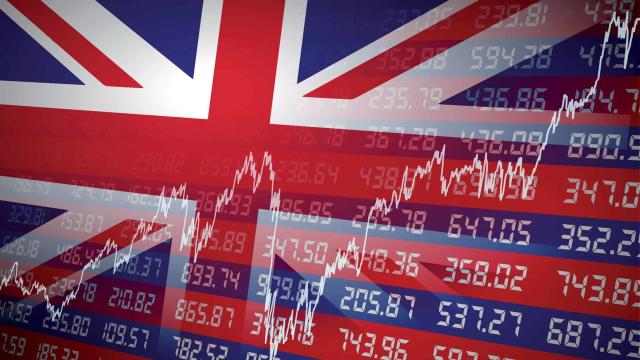Understanding the indexftse ukx: A Comprehensive Guide to the UK Stock Market

Navigating the world of investments can feel like a daunting task, especially when it comes to understanding the nuances of the stock market. The FTSE index, a key indicator of the UK equity market, plays a pivotal role in this landscape. Whether you’re a seasoned investor or just starting your financial journey, grasping the ins and outs of the FTSE index is essential for making informed decisions.
From its origins to the companies it encompasses, this comprehensive guide will illuminate what the FTSE index represents and how it can affect your investment strategy. With insights into market trends and practical tips for leveraging this index, you’ll be better equipped to navigate your financial future. Join us as we untangle the complexities of the FTSE index, empowering you to take confident steps in your investment endeavors.
The History of the indexftse ukx
The FTSE (Financial Times Stock Exchange) Index traces its origins to 1935 when the *Financial News* (later merged with the *Financial Times*) created the FT30 Index, tracking 30 UK industrial stocks. This early benchmark evolved into today’s FTSE series after the London Stock Exchange (LSE) and *Financial Times* partnered in 1984 to launch the FTSE 100.
Key milestones:
1962: The FTSE All-Share Index debuted, covering 594 UK companies.
1984: FTSE 100 launched with a base value of 1,000, focusing on the LSE’s top 100 firms.
1995: FTSE Group became independent, later merging with Russell Investments in 2015 to form FTSE Russell.
Over time, the index expanded globally, adding sector-specific and international benchmarks like the FTSE Global Equity Index Series.
How the indexftse ukx is Calculated
The FTSE uses a free-float market capitalization-weighted method. Here’s how it works:
1. Select constituents: Companies must rank among the LSE’s largest by market cap and meet liquidity standards.
2. Weight adjustments: Each company’s influence depends on its freely tradable shares, excluding locked-in holdings.
3. Quarterly reviews: FTSE rebalances constituents every March, June, September, and December to reflect market changes.
For example, if HSBC’s shares rise 10%, its larger market cap gives it more weight in the FTSE 100 than smaller constituents.
Types of FTSE Indices: FTSE 100, FTSE 250, and FTSE All-Share
1、FTSE 100: Tracks the LSE’s 100 largest firms (e.g., Shell, AstraZeneca), representing ~80% of the UK’s market value.
2、FTSE 250: Covers mid-cap companies ranked 101–350, often seen as a growth indicator.
3、FTSE All-Share: Combines the FTSE 100, 250, and Small Cap indices, covering 98% of UK-listed equities.
These indices provide tiered exposure, from blue-chip stability (FTSE 100) to emerging innovators (FTSE 250)。
Importance of the FTSE Index for Investors
The FTSE serves three critical roles:
1. Economic barometer: Movements reflect UK corporate health and global investor sentiment.
2. Diversification tool: ETFs like iShares FTSE 100 (ISF) let investors gain broad exposure without picking individual stocks.
3. Benchmarking: Fund managers compare performance against FTSE indices to assess strategy effectiveness.
For instance, a 10% annualized return in the FTSE 100 often signals strong corporate earnings and stable macroeconomic conditions.
Key Factors Influencing the indexftse ukx
Macro trends: UK GDP growth, inflation, and Bank of England rate decisions directly impact constituent earnings.
Currency fluctuations: A weaker GBP boosts FTSE 100 multinationals like Unilever, which earn ~60% of revenue overseas.
Global events: Brexit, geopolitical tensions, and commodity prices (e.g., oil) drive volatility.
Sector rotations: Tech booms or energy crashes reshape index composition over time.
For example, the 2024 surge in renewable energy stocks lifted the FTSE All-Share as climate policies gained momentum.
Comparing the FTSE Index with Other Global Indices
| Index | Region | Key Features |
|---|---|---|
| FTSE 100 | UK | Heavy on energy, finance, and multinationals |
| S&P 500 | US | Tech-dominated, higher growth potential |
| DAX 40 | Germany | Industrial and export-focused |
| Nikkei 225 | Japan | Manufacturing and automotive emphasis |
While the S&P 500 outperformed the FTSE 100 in tech-driven rallies (2010–2020), the FTSE offers stability via dividends (average 4% yield)。
Strategies for Investing in FTSE-listed Companies
ETF investing: Low-cost options like Vanguard FTSE 100 ETF (VUKE) provide instant diversification.
Dividend focus: Target high-yield stocks like British American Tobacco (8% yield) for passive income.
Sector bets: use research from platforms such as Hargreaves Lansdown to add to undervalued sectors (e.g. UK banks in 2025).
Hedging: Pair FTSE 100 ETFs with put options during market downturns to limit losses.
For example, reinvesting dividends from FTSE 100 ETFs between 2020–2024 boosted total returns by 23%.
Common Misconceptions about the FTSE Index
1. “It’s only for UK investors”: Over 70% of FTSE 100 revenues come from overseas, making it a global play.
2. “It’s stagnant”: The index added 12 tech firms since 2020, including Darktrace and Wise.
3. “All constituents are British”: Companies like Antofagasta (Chilean mining) and CRH (Irish materials) are included.
Conclusion: The Future of the FTSE Index and UK Stock Market
The FTSE faces both challenges and opportunities:
Risks: Post-Brexit regulatory shifts, slowing global growth, and competition from US tech giants.
Catalysts: Green energy investments, AI adoption, and London’s push to attract IPOs.
Analysts project the FTSE 100 could reach 9,000 by 2026 if UK firms capitalize on AI and decarbonization trends. For investors, blending FTSE ETFs with selective stock picks offers a balanced approach to navigating this evolving landscape.